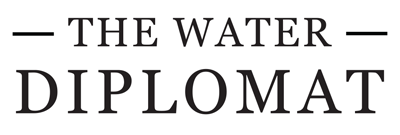International Water Law and Transboundary Water Cooperation
13 Jun 2023
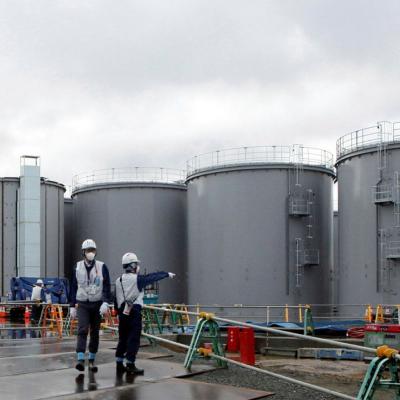
The Fukushima Daiichi nuclear power facility has commenced the trials of equipment to release radioactive wastewater from the plant into the Pacific Ocean. The Tokyo Electric Power...
6 Jul 2023
UNECE Water Convention hosts 18th meeting on IWRM
The Convention on the Protection and Use of Transboundary Watercourses and International Lakes (UNECE Water Convention or Helsinki Convention) hosted a meeting of its working group...
6 Jul 2023
FAO launches Global Dialogue on Water Tenure
The Food and Agriculture Organisation (FAO) of the United Nations has launched the Global Dialogue on Water Tenure, which commenced at the UN 2023 Water Conference in March this ye...
Water in Armed Conflict and other situations of violence
22 Jun 2023
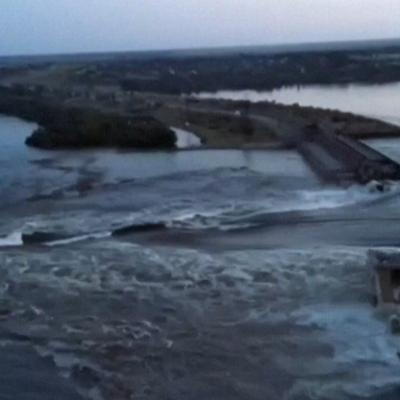
The Nova Kakhovka Dam, Ukraine’s largest dam by volume with a reservoir containing approximately 18 km³ of water, was destroyed on the 6th of June, releasing a high energy wave dow...
5 Jul 2023
Afghanistan and Iran seek solution over the waters of the Helmand River
Amid a recent drought in south-eastern Iran, the dispute between Afghanistan and Iran over the rights to the waters of the Helmand River have re-emerged, leading to violent clashes...
3 Jul 2023
Conflict, water shortages and humanitarian responses in Sudan
Fighting between rival factions of Sudan’s military that erupted in mid-April has led to a worsening humanitarian situation in the country which includes increasing shortages of wa...
Knowledge Based, Data-Driven Decision Making
29 Jun 2023
Is the Jet Stream changing weather patterns in the northern hemisphere?
Social media comments by atmospheric scientists and meteorologists on the 20th of June likened the unusual shape of the global jet stream currents to a Van Gogh painting, setting o...
27 Jun 2023
ICIMOD report calls for urgent international action to save the Hindu Kush Himalayan Cryosphere
The International Centre for Integrated Mountain Development (ICIMOD) has released a report detailing changes to the glaciers, snow and permafrost in the Hindu Kush Himalayan (HKH)...
10 Jul 2023
Study shows contribution of groundwater extraction to sea level rise
According to a study published in Geophysical Research Letters, groundwater extraction has been a significant s=contributor to global sea level rise in the period between 1993 and ...
Finance for water cooperation
5 Jul 2023
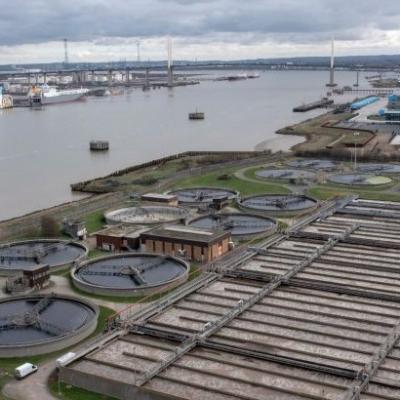
Thames Water, the U.K.’s largest water utility which provides water supplies to some 10 million clients in London and the Thames Valley, is facing the threat of insolvency, with so...
23 Jun 2023
Tanzania to launch U.S. $ 20 billion water investment programme
The government of Tanzania has announced that it will launch a U.S. $ 20 billion water investment programme in the course of 2023. The aim of the programme, which will run from 202...
30 Jun 2023
Paris Climate Finance Pact Summit: no clear decisions but increased momentum
France hosted an international summit on a new global financial pact on finance on the 22nd and 23rd of June. The summit aimed amongst others to create financial breathing space fo...
National and Local News
15 Jun 2023
Tehran Experiences five days of Water Cuts
The Iranian Capital Tehran has suffered five days of interruptions in the supply of piped water which has been linked to a flooding event. Iran’s Minister of Energy announced that ...
26 Jun 2023
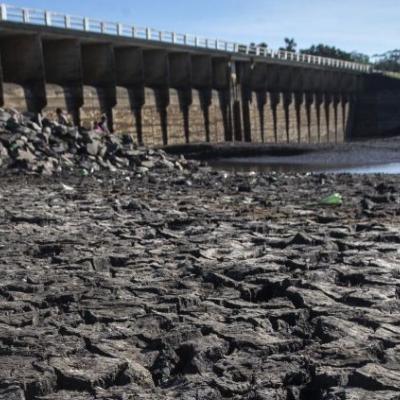
Uruguay President Luis Lacalle Pou declared a state of emergency in the capital Montevideo on the 20th of June following drops in the levels of the city’s supply reservoir. Uruguay...
27 Jun 2023
Delhi Constructs More Rainwater Harvesting Pits
The New Delhi Public Works Department has announced that it has constructed an additional 82 rainwater harvesting pits to capture water during the monsoon and recharge aquifers. Th...
International Water Law and Transboundary Water Cooperation

Fukushima Nuclear Plant commences wastewater release trials
The Fukushima Daiichi nuclear power facility has commenced the trials of equipment to release radioactive wastewater from the plant into the Pacific Ocean. The Tokyo Electric Power Company (TEPCO) began tests of processing equipment on the 11th of June for the planned release of pre-treated wastewater which has been stored at the severely damaged nuclear facility. This involved transferring seawater into an underwater tunnel which is planned to be used for the release of the wastewater into the ocean.
The radioactive water was previously used to cool the reactors at the Fukushima plant which experienced a meltdown in 2011 following two earthquake-generated tsunamis. At the time, the plant operators pumped seawater into the system to cool the reactor. For the last 12 years, an average of 130 mᶟ of water has been contaminated per day, building a stock of wastewater which is currently close to exceeding the storage capacity of the plant. Currently some 1.3 million mᶟ has been accumulated in storage tanks which are located on the site of the Fukushima plant. The water has been pre-treated by TEPCO through a filtration system known as an Advanced Liquid Processing System (ALPS), to remove 62 radionuclides from contaminated water. However, the water still contains significant quantities of tritium, a radioactive isotope of hydrogen.
In May, the International Atomic Energy Agency (IAEA) released a report confirming that TEPCO has in the capabilities for accurate and precise measurement of the radioactive elements contained in the pre-treated water that is stored on site. The IAEA is engaged in a safety review which includes assessments of the technical plans and processes related to the treated water discharge.
The planned release of radioactive water has raised concerns among Pacific Island states and China, especially with regard to the safety of fishing in nearby waters. In South Korea, nationwide briefings have commenced on the scientific information on the safety of seawater and the fisheries products that are of importance to he South Korean economy.
UNECE Water Convention hosts 18th meeting on IWRM
The Convention on the Protection and Use of Transboundary Watercourses and International Lakes (UNECE Water Convention or Helsinki Convention) hosted a meeting of its working group on Integrated Water Resources Management in Geneva from the 19th to the 21st of June. The meeting brought together 300 participants in person and online, including government representatives from over 80 countries, with the objective of reviewing progress of the work under the Water Convention and to guide its future implementation.
Since the previous meeting of the working group, four additional countries have acceded to the convention, i.e. Cameroon (November 2022), Nigeria (22 March 2023), Iraq (24 March 2023) and Namibia (8 June 2023). Although the convention was originally developed as a regional framework for application in the Pan-European region and has a historical focus on water quality management, it was opened for accession to all UN member states in 2016 and has witnessed a large number of accessions since then, especially from the African continent.
Amongst other topics, the working group discussed the main outcomes of the United Nations 2023 Water Conference. Within a shared view that water needs to be at the top of the global agenda to achieve the transformational ambitions of the Sustainable Development Goals, a key point that was discussed was the emphasis on monitoring and reporting. Developing and sustaining joint monitoring and assessment programmes is seen as being indispensable for the sustainable management of the 286 transboundary river and lake basins and 592 transboundary aquifer systems worldwide, and one of the core obligations of the Water Convention. In this context, an update was provided on strategies for monitoring and assessment of transboundary rivers, lakes and groundwaters. These place more focus on the linkages between water quality, groundwater and freshwater ecosystems and their ecology and emphasise the importance of jointly developed monitoring networks.
With the third data drive to collect information on the implementation of Sustainable Development Goal 6 on water underway, the meeting also focused on the reporting procedures for SDG indicator 6.5.2., which measures the proportion of transboundary basin area in any given country which has an operational arrangement for water cooperation.
FAO launches Global Dialogue on Water Tenure
The Food and Agriculture Organisation (FAO) of the United Nations has launched the Global Dialogue on Water Tenure, which commenced at the UN 2023 Water Conference in March this year. According to Sasha Koo-Oshima, Deputy Director of the FAO Land and Water Division, the dialogue will address the increasingly pressing issue of water allocation under scenarios of diminishing freshwater resources due to climate change and evolving needs for water. A global dialogue on water tenure, FAO argues, could lead to an agreement on voluntary guidelines which define the principles for responsible governance of water tenure.
A FAO concept paper from 2022 highlighted the fact that while agriculture is by far the dominant user of water, agricultural water use faces increasing competition from industry, cities and the environment. As FAO argues, on the way from source to sea, water is used many times by different people and for different purposes. Water is needed for domestic water supply and sanitation, for businesses and for industry. In most countries the largest water user is agriculture to produce food and sustain farmers’ livelihoods. Water is also needed by natural vegetation, wildlife and fish. This complexity and diversity of uses has led to the development of rules in society for the extraction of water from nature and the conditions for its return to the environment. It is the collection of rights, rules, duties and practices related to water that constitute water tenure. It is a relationship, defined by customs or by law, defined by individuals and groups, with respect to water resources. To achieve equity and environmental sustainability in water use, water tenure arrangements are an important tool. Especially in cases where multiple water tenure systems exist and/or where there water tenure arrangements are incoherent, it is important to review these arrangements to ensure consistency.
For FAO, the goal of achieving global food security is central to its mandate. Yet, to feed a projected global population of 10 billion in 2050, FAO’s paper argues, agricultural production will need to increase by almost 50 percent, and irrigation will play a large role in this. Resolving issues around rights of access to and use of water require on the one hand security of tenure for the users, but also flexibility in the allocation system to respond to changes in water availability and water demand. The hope is that a global dialogue on water tenure, led by FAO, can lead to an agreement on voluntary guidelines defining principles for responsible governance of water tenure. In a similar process for land tenure, voluntary guidelines on land, fisheries and forest tenure were developed and endorsed by the committee on world food security in 2012.
Water in Armed Conflict and other situations of violence

The Destruction of Nova Kakhovka Dam: a review
The Nova Kakhovka Dam, Ukraine’s largest dam by volume with a reservoir containing approximately 18 km³ of water, was destroyed on the 6th of June, releasing a high energy wave down the Dnieper River that caused catastrophic flooding. The floods have so far caused 45 confirmed fatalities, destroyed villages, inundated farmland and cut off clean water supplies in the lower section of the Dnieper River for more than 1 million people. According to a telegram message posted by President Zelensky, about 80 settlements with a potentially impacted population of 100,000 are located downstream of the dam. Amongst these are Kherson, a city with a population of 300,000, of which, according to sattelite observations, some 19% was flooded as a result of the collapse of the dam. By the 7th of June the water reached its highest point at 5,6 metres on the right bank of the river. The humanitarian research organisation REACH provided a Situation Overview on the 16th of June which indicated that evacuees had in general left their homes rapidly with very few items and remained in dormitories and other shelters close to their places of residence in order to be able to return quickly after the waters subside. Denise Brown, UN humanitarian coordinator for Ukraine, released a statement on the 18th of June, indicating that it had been engaging with the Governments of Ukraine and the Russian Federation regarding effective delivery of humanitarian aid to all people affected by the destruction of the Kakhovka Dam. However, the government of the Russian Federation has reportedly declined requests to access the areas under its military control.
Local leadership is also reported to have expressed concern about the health impacts of the release of 465,000 tons of transformer oil from the Kakhovka Hydroelectric Power Plant. Similarly, REACH’s analysis identified 134 potentially hazardous structures potentially affected by flooding, including 24 hazardous industrial facilities. The oil and industrial pollutants pose a threat for downstream soil as well as wildlife and vegetation. The floods have also transported large amounts of debris to the coast, including animal carcasses, tress and even landmines, leading to the prohibition of recreation activities along the coastline in areas such as Odesa.
Ukrainian Deputy Foreign Minister Andriy Melnyk described the environmental impact of the dam as "the worst environmental disaster in Europe since Chernobyl," with more than 48 protected areas at risk from the pollution. Ukraine’s prosecutor general has launched and investigation into the event as a possible instance of ecocide.
As of the 20th of June, Ukrainian Environment Minister Ruslan Strilets reported to European counterparts that although assessments were still ongoing, an estimated U.S. $ 1.2 billion in damage had been inflicted by the floods. He further noted that the collapse of the dam was the largest environmental disaster since the February 2022 invasion of Ukraine.
As predicted in early June, the drop in the water levels in the dam reservoir effectively cut the water supplies to the North Crimea Canal. The canal transfers water to northern Crimea, feeding water to an extensive network of irrigation canals across 31 irrigation systems which serviced some 584,000 hectares of cropland. This development can be expected to further undermine agricultural production in Ukraine. The Ukrainian Ministry of Agriculture has warned of the rapid desertification of large areas of cropland as early as next year. Martin Griffiths, the UN Undersecretary-General for Humanitarian Affairs and Emergency Relief Coordinator, warned of the secondary consequences of the destruction of the dam, which would have an impact on both global food prices and food availability. Speaking to the BBC, Mr Griffiths stated: "This is a breadbasket - that whole area going down towards the Black Sea and Crimea is a breadbasket not only for Ukraine but also for the world, .. […] … we're in difficulties already on food security but food prices, I'm sure, are bound to increase."
Afghanistan and Iran seek solution over the waters of the Helmand River
Amid a recent drought in south-eastern Iran, the dispute between Afghanistan and Iran over the rights to the waters of the Helmand River have re-emerged, leading to violent clashes. A violent incident took place on the 27th of May in which Iranian border guards and Taliban fighters opened fire, killing two people. However, the Afghan government has recently recommitted itself to the terms of an agreement on the shared waters of the Helmand River.
The two countries have enjoyed peaceful relations for many years, but the dispute over the rights to the use of the waters of the Helmand River dates back many decades. Falling water levels that are the result of a record drought in the region have induced both parties to try to secure their share of the waters and have led to conflicting claims over the Helmand River’s water. Iran has accused the government of Afghanistan of altering and restricting the flow of tributaries of the Helmand River by constructing dams
The Helmand River originates in the Hindu Kush mountains in Afghanistan and flows through the country for most of its 1,150 km route, ending in Lake Hamon in the Sistan wetlands which are shared by the two countries. Iran depends heavily on this water for irrigation in the southern province of Sistan-Baluchistan. The two countries signed a treaty in 1973 allowing Iran a flow of 22 cubic metres per second with an additional option to buy four cubic metres per second in years of average or ‘normal’ water flow. This agreement, however, has never been ratified due to political changes and war in Afghanistan.
Conflict, water shortages and humanitarian responses in Sudan
Fighting between rival factions of Sudan’s military that erupted in mid-April has led to a worsening humanitarian situation in the country which includes increasing shortages of water and food. Fighting broke out between the Sudanese Armed Forces and the Rapid Support Forces in various cities on the 15th of April. The conflict has continued for more than two months now, and inter-communal violence has also spread in the Darfur Region. According to an estimate by Action Against Hunger on the 21st of June, at least 866 people have been killed and more than 6,000 have been injured.
The United Nations Office for the Coordination of Humanitarian Affairs (UNOCHA) estimates that more than 2 million people had been displaced as a result of the conflict as of the 20th of June. The conflict has worsened a humanitarian situation which was already dire in the country, as the total number of people in need of humanitarian assistance increased from the estimated 15.8 million in 2022 to 24.7 million in May 2023, which represents a 57% increase.
Sudan is struggling with severe water shortages partly caused by direct damage to infrastructure as well as power shortages and lack of fuel. Some 300, 000 residents of Khartoum have been left without access to piped water for weeks, exposing households to security risks of fetching water amid the conflict. There has been a sharp increase in the price of consumer goods, especially in the Khartoum area, with price increases of up to 1000% for fuel. Water shortages have been reported across Khartoum state, with water treatment systems out of operation. Authorities are reportedly unable to repair water treatment and supply systems due to security risks. As a result, the population has had to rely on unprotected sources of water such as the Nile River.
Part of the humanitarian response has therefore been to ensure the provision of safe water supplies and to conduct emergency repairs to water networks in partnership with technical specialists and local volunteer groups. UNICEF reports that WASH technical group partners have worked to install and maintain sanitation facilities along the border with Egypt and has delivered hygiene equipment through a humanitarian corridor.
According to Action Against Hunger, the conflict is threatening the planting season: the optimum planting season for sorghum and millet is June-July, and this is being disrupted by the conflict. The agricultural sector in Sudan accounts for 35%-40% of GDP and employs 80% of the population. Sudan already has one of the highest child malnutrition rates in the world, and it is estimated that a further 2,5 million people could become acutely food insecure.
Knowledge Based, Data-Driven Decision Making
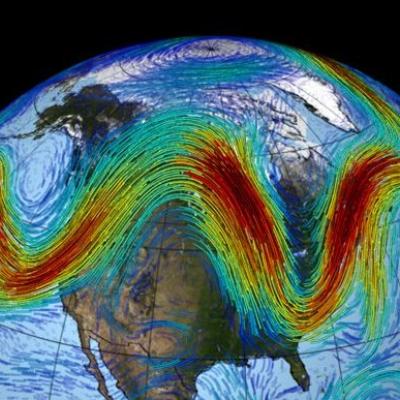
Is the Jet Stream changing weather patterns in the northern hemisphere?
Social media comments by atmospheric scientists and meteorologists on the 20th of June likened the unusual shape of the global jet stream currents to a Van Gogh painting, setting off a range of media reports on the persistent heat dome across North America. Atmospheric scientists have expressed concern over the ‘meandering’ of the jet stream air currents during summers in the northern hemisphere. It has been observed that the waves on the jet stream, which is a band of high-altitude strong winds generally blowing from west to east across the globe, are gaining in amplitude and remaining almost stationary for extended periods of time, locking weather systems into place.
In the United States, this has led to deadly tornadoes and extreme temperatures in the south. Severe stormy weather was announced in the southern United States in the second week of June which knocked out power supplies for more than 100,000 with reports of tornadoes and hailstorms with exceptionally large hailstones. Canada experienced its worst fire season in modern history with more than 400 wildfires fires burning simultaneously, with smoke that reached New York City on the 9th of June. Guatemala and Mexico have experienced record breaking temperatures, with Guatemala considering the declaration of an electricity emergency due to the lack of rains and difficulties in generating hydroelectric power. In Mexico some areas measured temperatures above 45⁰C, and at least 112 people are reported to have died because of exposure to extreme heat.
The jury is still out on the precise causes, but attribution studies are underway and climate change is among the causal factors that is being brought to the fore. For instance, According to analysis by Climate Central, this extreme weather has been made at least five times more likely through climate change. To an extent, this weather can be attributed to the return of the El Niño phenomenon, but climate attribution models indicate that climate change does make these extremes more likely.
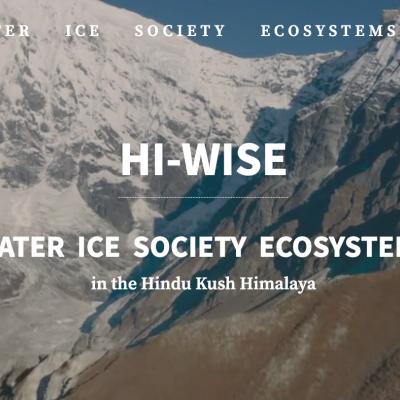
ICIMOD report calls for urgent international action to save the Hindu Kush Himalayan Cryosphere
The International Centre for Integrated Mountain Development (ICIMOD) has released a report detailing changes to the glaciers, snow and permafrost in the Hindu Kush Himalayan (HKH). The report, produced by the eight-nation mountain monitoring body, is the most detailed and accurate report to date on the HKH region, and it warns of accelerated disappearance of glaciers over the past decade as well as an impending cascade of impacts of climate change in the region which will affect one quarter of the world’s population. The report calls for urgent international support and regional cooperation now to respond to loss and damage from climate change as well as to help communities in their efforts to adaptation to a changing climate.
The Hindu Kush Himalayan region is sometimes also referred to as the world’s ‘third pole’ due to the fact that it stores the largest quantity of snow and ice outside the polar regions. The ice and snow in the Hindu Kush Himalaya are an important source of water for 12 rivers – 10 of them transboundary rivers - that flow through 16 countries in Asia, providing freshwater and other vital ecosystem services to 240 million people in the mountains and a further 1.65 billion downstream. For instance, the HKH area contributes up to 74% of river flow in the Amu Darya River Basin shared by Tajikistan, Afghanistan, Turkmenistan, and Uzbekistan. It also contributes 40% of the flow of the Indus (40%) shared by Pakistan, India, China and Afghanistan, as well as 77% of the Helmand River shared by Afghanistan and Iran. The area is also important from the perspective of biodiversity, hosting all or parts of four global biodiversity hotspots supporting diverse flora and fauna.
The report warns that the region is undergoing unprecedented and largely irreversible changes, primarily driven by climate change. If current emissions patterns continue, the area could lose up to 80% of its glaciers by the end of the century. Speaking to CBS New, ICOMOD Deputy Director General Izabella Koziell stated “The crisis is getting worse, and it is getting worse fast – that is why this report is so important: it needs to trigger rapid and urgent action even if this feels remote from us sitting far aways from this region. It is going to affect us all whether that is through the mass movement of peoples or through sea level rise”.
Study shows contribution of groundwater extraction to sea level rise
According to a study published in Geophysical Research Letters, groundwater extraction has been a significant s=contributor to global sea level rise in the period between 1993 and 2010. Global sea level rise is currently associated primarily with the melting of polar ice sheets and mountain glaciers. Scientists have in the past suggested that the depletion of groundwater for irrigation and urban consumption could also contribute to a rise in sea levels, but there was so far no evidence to confirm or reject this theory. However, a group of researchers under the leadership of Ki-Weon Seo from the Department of Earth Sciences at Seoul National University have conducted research which provides the first evidence that groundwater pumping does contribute to sea level rise.
To make their argument, the researchers analysed the relationship between changes in global water storage and changes in the polar motion of the planet. Using precise observations of changes in the orientation of the earth’s axis, it is possible to relate any ‘wobbles’ of the axis with changes in the distribution of weight on the surface of the earth, including melting ice, water stored in dams, and groundwater extraction. Melting ice and groundwater extraction can be expected to contribute to sea level rise as long as this water reaches the seas and oceans. However, a large amount of surface water is also stored in dams, which limits the flows of water to the coast.
The researchers modelled the changes in the rotational pole of the earth, including insights on how changing the amount of water on the surface of the earth could affect the tilt of the earth’s axis. They compared the observed changes to predicted changes first by only considering the effect of melting ice, and then by adding in scenarios of groundwater redistribution. They found that if only melting ice is considered, the model does not correspond all to well with observed reality. However, if the displacement of groundwater is factored in, the model fits remarkably well with observations. The earth’s pole, it was found, has drifted toward 64.16°E at a speed of 4.36 cm/year in the period during 1993–2010 due to groundwater depletion and resulting sea level rise.
Finance for water cooperation

Thames Water: Privatised water utility faces insolvency
Thames Water, the U.K.’s largest water utility which provides water supplies to some 10 million clients in London and the Thames Valley, is facing the threat of insolvency, with some U.S. $ 17.5 billion in accumulated debt. The debt is secured by some U.S. $ 22.7 billion in operating assets, and the threat of insolvency comes despite an investment of U.S. $ 637 million by a group of institutional investors in 2022. According to the BBC, Thames Water’s profits have not been able to cover the costs of interest on its debts since 2016. The U.K.’s regulatory authority in the water sector, OFWAT, has been criticised for not protecting the sector sufficiently against this development.
The government has held emergency talks over the fate of the company and is prepared to place the company under state ownership if its shareholders are not able to amass the investments required to stave off insolvency. With the press coverage about the possibility of tougher regulation and even nationalisation of the company, stocks in British utilities declined towards the end of June. According to Chris Beauchamp, chief market analyst at IG, "The potential demise of Thames Water has investors running scared, and London's listed utilities are under pressure as a result.”
According to commentators, Thames Water’s debts have been accumulating for a long time and even date back to the privatisation of the company in 1989. The company was taken over by RWE in 2001, but RWE sold the company again five years later to an Australian consortium under the leadership of Macquarie. In the 11 years that Macquarie owned Thames Water, the company’s debts rose by some U.S. $ 5 billion, but nevertheless, the company paid out at least U.S. $ 1.4 billion in dividends to its shareholders. The water sector in the UK has also been accused of disregard for the environment, with more than 300,000 separate discharges of raw sewage into rivers and seas in 2022, most of which were illegal. Thames water was recently fined $ 4.2 million for the discharge of millions of litres of undiluted sewage into two rivers, the Gatwick stream near Gatwick airport, and the River Mole in Surrey.
Government ministers and the water services regulatory authority OFWAT are currently discussing different approaches to keeping the company solvent. A major pension fund, Universities Superannuation Scheme (USS), which is a major investor in the water sector, has expressed interest in becoming a shareholder as solutions are sought.
Tanzania to launch U.S. $ 20 billion water investment programme
The government of Tanzania has announced that it will launch a U.S. $ 20 billion water investment programme in the course of 2023. The aim of the programme, which will run from 2023 to 2030, will be to boost water security in Tanzania through investments in four key areas. The first of these, accounting for 40% of investments, is investment in social well-being: investments to improve access to water and sanitation services, the promotion of gender equality and social inclusion, and livelihood improvement. Secondly, the programme will invest in water governance – accounting for 8% of expenditures - by strengthening institutions, investing in human resources development, and leveraging other investments. Thirdly, the programme will focus on facilitating economic development, absorbing 32% of investments, through strategic investments in water resources development and management. Finally, the programme will focus on improving climate resilience and environmental sustainability, which will take up an estimated 20% of the budget.
The Tanzanian water investment programme being developed with technical support from the Global Water Partnership’s Tanzania and Southern Africa offices. The Global Water Partnership Southern Africa offices hosts the Secretariat of the Continental African Water Investment Programme (AIP), an African Union (AU) initiative which was launched at the 9th World Water Forum in Dakar, Senegal in 2022. The AIP has signalled an investment shortfall to achieve Sustainable Development Goal 6 on water and sanitation across the African continent and aims to ensure the investment of U.S. $ 30 billion a year to close the investment gap.
Zambia was the first country to launch a national level water investment programme as envisaged under the AIP: the Zambia Water Investment Programme was launched in July 2022 with an investment envelope of U.S. $ 5.75 billion. Zanzibar also has a water investment programme, announced in March 2022, with an investment portfolio of U.S. $ 665 million.

Paris Climate Finance Pact Summit: no clear decisions but increased momentum
France hosted an international summit on a new global financial pact on finance on the 22nd and 23rd of June. The summit aimed amongst others to create financial breathing space for countries facing financial difficulties, to promote private sector investment in low-income countries, to encourage investment in ‘green’ infrastructure, and to respond to the financial needs of countries vulnerable to climate change. The ambition as defined by French President Emmanuel Macron was to achieve a new consensus on the fight against poverty, the decarbonization of the economy and the protection of biodiversity. The financial aims were to clarify the amount of investment and the process required as well as to initiate a reform of global finance through the World Bank, the IMF, and public and private funds.
Despite its aims, the meeting ended without a major announcement from the 40 countries that were represented. Nevertheless, many issues were tabled, and progress was made on a number of topics. Much discussion has revolved around the pledge made at COP 15 in 2009 to make U.S. $ 100 billion in climate finance available per year by 2020. According to developed countries, the total amount currently available is U.S. $ 83 billion (some 30 billion through public bilateral channels, 40 billion through multilateral public channels, and the rest through mobilised private finance including export credits). The total amount committed therefore still falls short of the pledge made at COP 15. Climate activists have come forward to voice their criticism of both the amount and the means by which it is delivered: thus Harjeet Singh from the Climate Action Network, for instance, commented that too much reliance is being placed on the role of private sector investments and multilateral banks rather than on public sources of finance.
In Paris, the IMF managing director announced that it has reached the target of rechannelling U.S. $ 100 billion to poorer countries in the form of Special Drawing Rights (SDRs). To achieve this, a number of wealthier countries such as Japan and France have committed to pledge a portion of their own SDRs for use by low-income countries. However, there are still challenges in the delivery of this financial package. The first challenge is the lack of clear separation between finance that is strictly climate related and compensates poor countries for climate impacts largely created by industrialised countries, and finance that is ‘development’ related or designed to respond to global shocks such as the COVID-19 pandemic. The second is that this finance indeed largely comes in the form of loans and therefore threatens to increase overall indebtedness rather than providing debt relief.
A second major topic on which discussions advanced was around the climate-debt trap, whereby poor countries affected negatively by natural disasters need to take on new loans to respond to the damage. The World Bank Group announced a new toolkit for disaster preparedness which includes the possibility of pausing debt repayments and permitting the rapid redirection of a portion of funds for emergency needs if this is needed. This is to be backed up by improvements in early warning and emergency response systems.
A third proposal, tabled by French President Emmanuel Macron, was to impose taxation on shipping, aviation or financial transactions to help generate funds to respond to global problems. According to Macron, there has been political traction so far on constructing a tax on carbon emissions from shipping. It has been estimated that such a shipping tax, is instituted, could raise some U.S. $ 5 billion a year.
National and Local News
Tehran Experiences five days of Water Cuts
The Iranian Capital Tehran has suffered five days of interruptions in the supply of piped water which has been linked to a flooding event. Iran’s Minister of Energy announced that the interruptions were caused by a landslide that occurred in the vicinity of the Karaj dam, causing high levels of turbidity in the water. The Karaj dam is located 63 kilometres northwest if Tehran and was built as a multipurpose dam to supply irrigation water to the Karaj area as well as drinking water for Tehran. The landslide reportedly took place downstream of the dam and blocked the water supply, following which works needed to be undertaken to free a 300-metre-long channel to restore the water supply
Officials announced on the 14th of June that water supplies had been restored, but tankers were still distributing emergency water supplies in the city on that day and water pressure in the pipes remained low. Officials had announced on the 13th that water treatment facilities had resumed operations and that efforts were underway to restore the water pressure in the city.
Iran has experienced public protests over water supplies in 2021 and 2022: in 2021 protests that started in Khuzestan province spread to nine other regions. In 2022 protests broke out in the cities of Hamedan and Shahrekord in response to water cut offs that lasted several days. In 2022, four cities were similarly affected by flash floods which caused increased water turbidity. However, the protests in the city of Isfahan in 2021 were also linked to a river diversion project.
Iran has experienced a prolonged period of overexploitation of water resources as well as a decline in annual precipitation and increases in temperature. Lakes and wetlands in the east of the country have disappeared and climate related internal migration has been increasing. Securing supplies for urban populations as well as for food security is becoming increasingly challenging.

Uruguay Declares Water Emergency
Uruguay President Luis Lacalle Pou declared a state of emergency in the capital Montevideo on the 20th of June following drops in the levels of the city’s supply reservoir. Uruguay is currently facing its worst drought in 74 years. The city of Montevideo relies for its water supply on the Paso Severino Dam which has a potential storage capacity of 70 million m³, but dams levels have been dropping and reached just 4.6 million hm³ in early June, or 6.6% of total capacity. Water managers at the Aguas Corrientes water treatment plant which supplies potable water to the department of Montevideo have resorted to mixing water from the Paso Severino reservoir (fresh water) with water from the lower section of the Santa Lucia River, which has higher salt content. The utility submitted an application to the Ministry of Public Health to request permission to temporarily exceed the maximum salinity levels in the drinking water. In May, the authorities raised the limit for sodium in the water by 160%.
The water crisis prompted protests in Uruguay against the government’s handling of the drought as well as the salinity levels in the water. Labour Unions pressed the government to reduce water prices, as purchases of bottled water skyrocketed in the city.
According to a rapid attribution study conducted by the world weather attribution service, climate change is only partially to blame for the extreme weather conditions. South America has been suffering from a prolonged drought for the last three years, primarily induced by the recent La Niña event. In July 2022, the World Meteorological Organisation (WMO) produced a State of the Climate in Latin America and the Caribbean report which highlighted – amongst other issues – the drought in the Paraná–La Plata Basin. This drought has been the worst since 1944 and has affected many sectors, including agriculture, inland water navigation, energy production, and water supply as well as ecosystems.
Delhi Constructs More Rainwater Harvesting Pits
The New Delhi Public Works Department has announced that it has constructed an additional 82 rainwater harvesting pits to capture water during the monsoon and recharge aquifers. The pits were constructed at waterlogging hotspots in the city along the margins of roads to prevent waterlogging. The Delhi administration made the installation of rainwater harvesting systems mandatory in 2012 for all plots exceeding an area of 100 m². Although the aim was to complete 1,500 such pits in partnership with roads authorities and civil agencies by July last year, there are currently just over 1,000 pits in place.
This development is line with the policy of central government from 2012, which contains provisions for rainwater harvesting - including the revival of traditional water harvesting structures by States – but also seek to increase the availability of utilizable water in urban and industrial areas and the conjunctive use of groundwater and rainwater.
The rainwater harvesting systems in New Delhi are also mandatory for buildings whose water discharge during rains can exceed 10,000 litres per day. All landowners complying with this regulation are provided with a 10% rebate on their water bills, and those not complying can face additional water charges of up to 50%. Furthermore, new water connections to households are only approved if the building plans include a rainwater harvesting system that complies with government regulations.
In May, the government ordered a survey of suitable rainwater harvesting sites, which involved 2,139 municipal buildings, health centres, parks and roads. It weas found that a rainwater harvesting system already existed on the majority of the sites: some 63% of the sites (1,341 sites in total) has a system in place, of which 96% were functional.
New Delhi has a low rainfall, only receiving 611 mm of precipitation on average a year, which falls on between 20-30 days a year between June and September. The city requires some 477,000m³ of water per day to satisfy the demand of the population of 21 million. However, the water board currently only has some 354,00 m³ available. This water is largely supplied through a lined canal from the Yamuna River at Haryana, but the city administration has requested a larger share and allocation of water and has petitioned the Delhi High Court over its water supplies, also citing poor quality of the raw water being supplied to it which contains high levels of ammonia. It is in the context of this shortfall in supply that the Delhi government announced a number of measures to respond to this water supply shortfall, of which rainwater harvesting was one.
